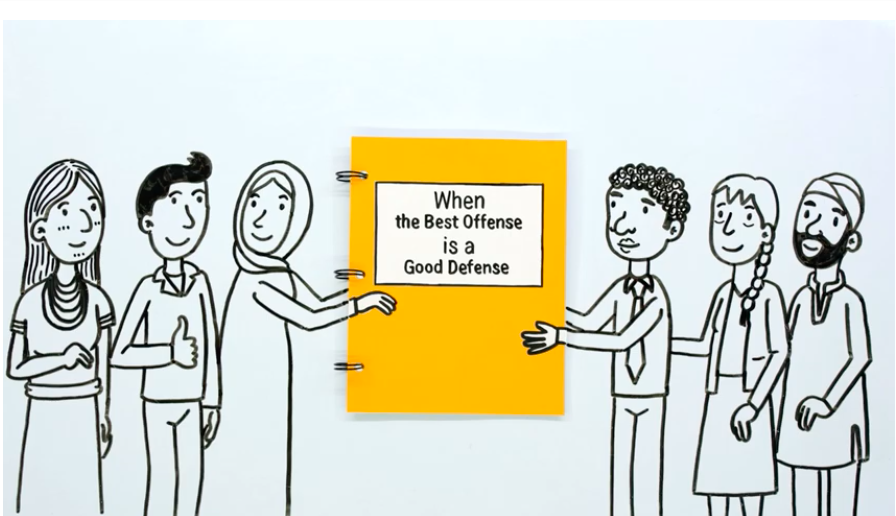A new Prime Minister, a possible General Election and Brexit continues to rumble on.
In our current, politically uncertain times do we need to start to reconsider what campaign success looks like?
That’s why I really enjoyed the latest paper from the team at the Centre for Evaluation Innovation which looks at how to define what successful defensive advocacy looks like (and is summarised in the short video below)
I’ve written before that sometimes campaigners should focus on ‘keeping the keep’ rather than expecting that they can move the ball down the field , so the report ‘When the Best Offense is a Good Defense: Understanding and Measuring Advocacy on the Defense’ provides a really helpful framework for what successful defensive advocacy, which they define as ‘a “win” can mean avoiding a disadvantageous policy or holding the line on past wins’, might look like.
Here at my top takeaways;
- Start to reconsider what success looks like – the whole premises of the report is that too often we spend our time focusing on advocacy that leads to how new policy changes that occur, but do we spend enough time. The report reflects that ‘one of the challenges for advocates on the defense is accurately describing and exciting funders about impact that doesn’t necessarily match up well with ingrained ideas of success: i.e. a pronounced and consistent upward trajectory of positive change for certain populations or environments’ but I think that’s also true within our organisations as well. Too often we’ve premised our narrative on progress, rather than highlighting that sometimes ‘holding the line’ is a success in itself.
- Understand the reactive approach you need to take – the report highlight that defensive advocacy can take on different approaches to ‘stop making bad stuff happen’, it can include;
- Maintaining a past win or preserving the status quo – is defined by advocacy to defend or maintain an existing law, act or policy.
- Lessening the blow – focusing on modifying or removing the most disadvantage aspects of a new policy.
- Killing the bill – when the focus of advocacy is preventing the adoption of new policies or laws.
- The importance of the inside game – having good relationships with those working inside Government or Parliament. They can informally alert you to possible threats before they’re publically known, as it can often easier to stop a proposal or approach being introduced before it is known publically as it’s easier for a target to ‘walk back’ their position without being perceived as having publically lost because of your pressure.
- Playing the long game – although most defensive advocacy is often in the moment responding to a threat, others are involved in ‘proactive defense’ – long-term defensive strategies that can focus on;
- Pre-emptive defense – building or maintaining capacity so they’re able to react quickly to foreseen defensive needs when a proactive approach is unfeasible.
- Long-term restoration – winning back previous losses over time when reactive efforts have failed.
- Being prepared – none of this work is possible without advocates having taken the time to think through what will be needed to play defense and built the standing capacity ready to respond as needed – it’s a theme I find myself coming back to, are we doing enough to plan and prepare for these moments, and do we test our processes to ensure we’re able to respond.
- Hold ourselves to the same standards – doing defensive advocacy isn’t second-order work, if it’s the approach that is needed, then it needs to be approached with the same thoroughness of thought, analysis of targets and opportunities, and consideration of a theory of change as advocacy that is pushing an agenda forward. The report also has some useful reflections on what tools we can use to evaluate our approaches.
But as I’ve reflected on the report I’ve also has been wondering if ‘offense is the best form of defense’ that our most successful advocacy is when we’re pushing forward a positive vision and agenda, so while we should be equipped with the tools to run defensive advocacy, we shouldn’t lose sight of the need to present a bigger vision in our advocacy.
